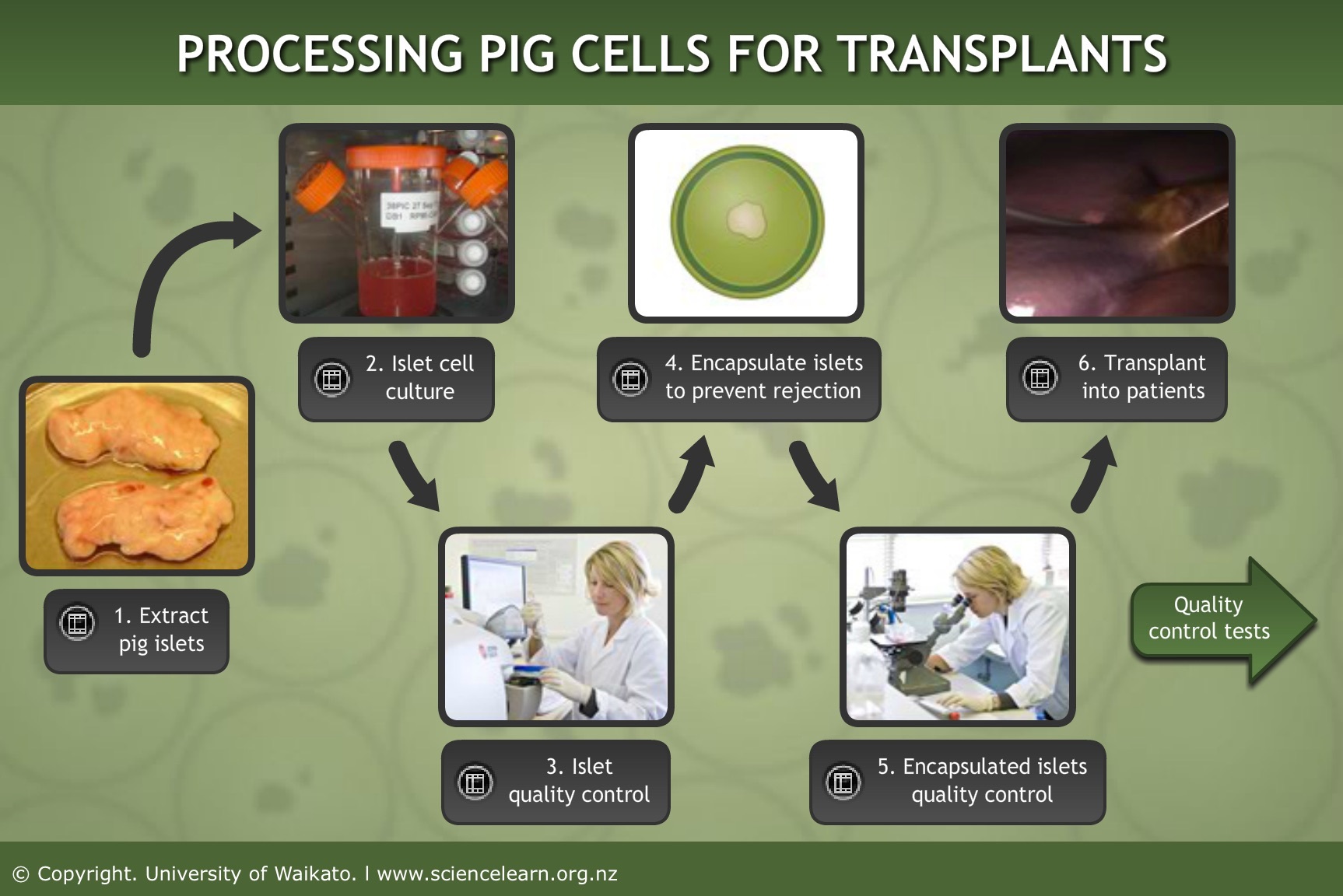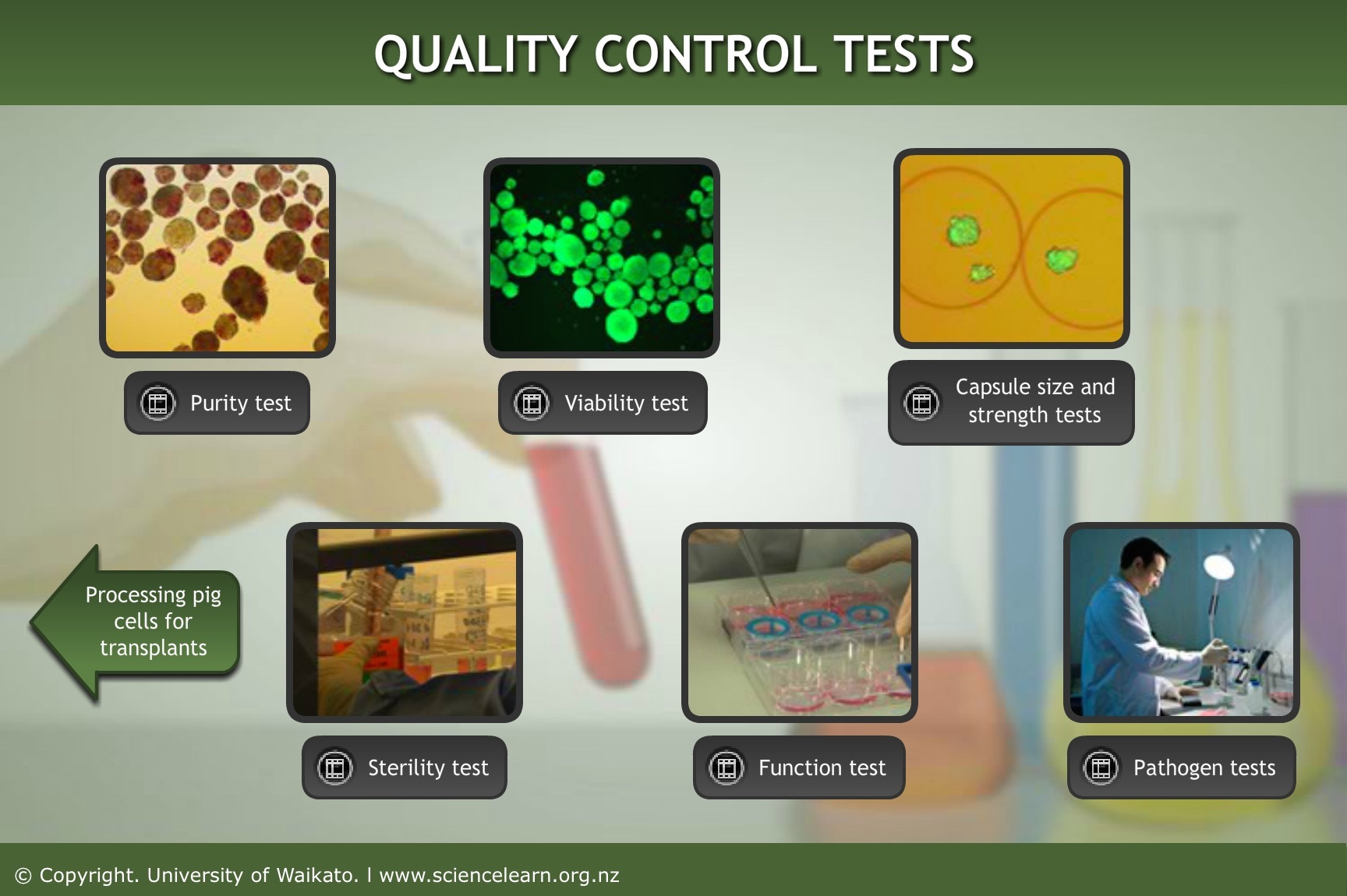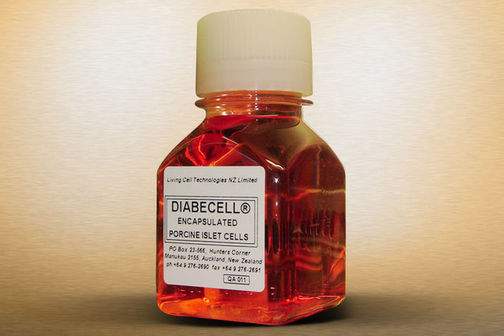Living Cell Technologies (LCT) encapsulates pancreatic pig cells inside a special coating before transplanting them into type 1 diabetics. This prevents them from being rejected by the patient’s immune system.
Type 1 diabetes and insulin
Type 1 diabetics must inject synthetic insulin every day to control their blood sugar levels in order to survive. Type 1 diabetics often experience high or low blood sugar levels, which can severely affect their health and lifestyle.
Find out more more about Diabetes and pig cell transplants.
A cure for type 1 diabetes
LCT’s goal is to treat type 1 diabetes by transplanting living cells containing insulin-producing cells from pigs. This is called a xenotransplant. The cells are called islets of Langerhans (or islets) and are extracted from pig pancreases.
Shortage of islets eased by xenotransplants
Islets can be transplanted from dead human donors into type 1 diabetics to provide insulin. However, the major obstacle to this process is the shortage of islets, so researchers at LCT are using islets from pigs. Pigs offer several advantages: they have large litters, are easy to breed and can supply enough cells to meet demand. Also, pig insulin is almost identical to human insulin. In fact, until the 1970s (when insulin was first synthesised), insulin for treating diabetes was extracted from cattle or pig pancreases.
Xenotransplant rejection
Rejection is a problem with any transplant, but is particularly important in xenotransplants. Our immune system protects us from disease by attacking and killing pathogens, like bacteria or viruses. Antibodies recognise transplanted animal cells or tissues as foreign and rapidly elicit an immune response. Anti-rejection drugs that suppress the immune system are given to xenotransplant recipients, but these drugs can have severe side effects and leave patients vulnerable to infection. LCT has developed a way of protecting pig cell transplants from the recipient’s immune system so they don’t need to take immune-suppressing drugs.
Protecting pig cells from the immune system
To prevent the xenotransplant being rejected by the recipient’s immune system, LCT encapsulates the cells in a seaweed-based coating that acts as a physical barrier to antibodies. The coating is semi-permeable – it has pores that allow small molecules, such as nutrients and insulin, to diffuse in and out but blocks larger molecules, such as antibodies.
Processing pig cells for transplants
The steps in processing and encapsulating pigs cells are described below. All steps are done by highly trained staff with sterile equipment and reagents.
Step 1. Extracting pig islets: 7–16-day-old piglets are anaesthetised, their pancreas is removed in an operating theatre and they are euthanised. All remaining steps are carried out in a sterile manufacturing area. The islets are extracted with enzymes and then washed and separated from the rest of the pancreatic tissue.
Step 2. Cell culture of islets: The islets are placed in nutrient-rich media for several days to recover.
Step 3. Islet quality control: The number, size, purity and viability of the islets are tested.
Step 4. Encapsulating islets: Islets are mixed with alginate, a seaweed extract, and passed through a narrow tube. The mixture is cut into tiny droplets with a blast of air. The droplets fall into a bath of calcium chloride where capsules form. This is because calcium ions displace sodium ions in the alginate, joining the polymer strands together and making them gel-like instead of liquid. The capsule is strengthened with a layer of poly-L-ornithine and another coating of alginate.
Step 5. Islet and capsule quality control: Purity, viability and function of the islets are tested again. The islets’ function is checked to ensure they release insulin in response to glucose. This is known as a static glucose stimulation (SGS) assay. It is also vital at this stage to check the quality of the coating to make sure the capsules are of uniform size, have minimal imperfections and contain islets.
Step 6. Transplanting encapsulated islets: Once all safety testing is complete, the encapsulated cells are transplanted into the abdomen of a patient. This is a simple surgical procedure where a small hole is cut in the abdomen and the cells are poured in. The encapsulated cells detect circulating blood sugar levels and release pig insulin if it is needed.
The final product: DIABECELL
Read this article to find out about the trials being undertaken for pig cell transplants.
Useful links
Information about human to human transplantation of islets from the US Department of Health and Human Services.
Keep up to date with the latest developments on the Algorae Pharmaceuticals Ltd website. In 2023 LCT changed it's name to Algorae Pharmaceuticals Ltd.







